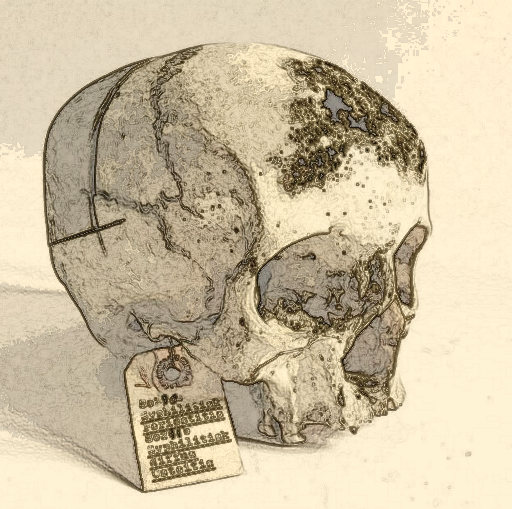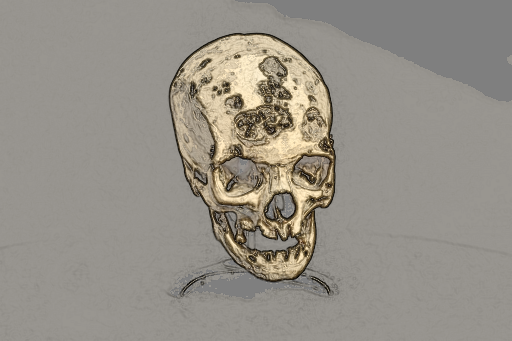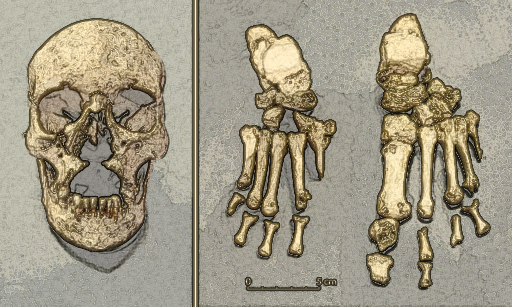Post Category : Archaeonerdism
Infectious Diseases in the Archaeological Record
COVID-19 has now been designated a global pandemic and continues to spread throughout the world. Not getting infected with this potentially lethal virus is at the forefront of many peoples minds, and the very real possibility of extended quarantine has led to shortages of items such as toilet paper, disinfectant and non-perishable food.
While this may seem like a novel experience to most, pandemics are not new to the human condition and have occurred many times throughout history. However, acute illnesses such as the common cold, the flu, or smallpox, are difficult to study in the archaeological record, since they do not leave any visible signs of infection on skeletal remains. These infections have a rapid onset, and those infected by them usually either recover or perish before the disease has a chance to affect their bones.
On the other hand, chronic infections have a slower onset and may last long enough for a person’s skeleton to show signs of the condition. Tuberculosis, leprosy, and syphilis are three infections that were quite common in some populations and are visible in the archaeological record. These diseases can last months to years, and without modern treatments, people can be plagued with these horrendous conditions for the duration of their lives. Although we may think of them as a part of history, these three infections continue to affect people that do not have access to modern healthcare.
Syphilis

Syphilis is caused by Treponema pallidum pallidum, which is a spiral-shaped, mobile bacterium. The infection is sexually transmitted (STI) and has several stages. This infection is sometimes fatal if left untreated and the bacterium can also be transmitted from pregnant women to their unborn children. While not all those with the bacteria will show symptoms (latent syphilis), usually within the first months of exposure, infected individuals will begin to experience skin lesions and rashes.

If left unchecked, the infection will spread throughout the body and sometimes cause massive sores, which may eat away the cranial bones. It is commonly speculated that during the 1500’s, endemic syphilis contributed to the rise in popularity of the powdered wig. Useful for controlling lice populations, powdered wigs were also used to cover up the hair-loss and unsightly sores experienced by those suffering from late stage syphilis.
Leprosy
Leprosy, which is Greek for ‘scaly skin’, has been recognized by humans for thousands of years, but its cause was poorly understood. An infection of Mycobacterium leprae or Mycobacterium lepromatosis causes the condition known as Leprosy (a.k.a. Hansen’s Disease). These bacteria destroy nerves throughout the body, causing infected persons to slowly lose their ability to feel pain. Early symptoms include pale or red rashes on skin, hair loss and numbness. As the disease progresses, secondary infections usually lead to disfigurement of the hands, feet and face.

The transmission of leprosy is still not fully understood, but is generally believe to be passed via the respiratory tract, not via skin contact, which was commonly believed prior to the modern era. Leprosy is usually contracted by close contact with an infected individual, or as the result of living in poverty in tropical climates where the bacteria is naturally prevalent. It is also possible for the bacteria to pass from animals to humans and vice versa, and the leprosy-causing agent has been found in both red squirrels and armadillos.
Most people that are in contact with the bacteria do not contract leprosy, and mothers cannot pass the bacteria to unborn children. However, there is a long history of social stigma attached to leprosy, and in some areas, afflicted individuals are still forced to reside in ‘leper colonies’. The word ‘leper’ is now considered a derogatory term.
Tuberculosis
Tuberculosis (TB) is a primarily a pulmonary disease caused by an infection of Mycobacterium tuberculosis bacteria. Like leprosy, TB has been around since ancient times, and was referred to as ‘phthisis’ in ancient Greece and ‘consumption’ in English speaking areas throughout history. While TB is primarily an infection of the lungs, it can spread to other regions to the body and can cause identifiable damage to the bones of afflicted individuals.

TB is thought to have originally been transmitted to humans from bovines (cows), and can be passed to humans from close contact with the animals, or consuming meat and unpasteurized milk products. One of the oldest known instance of tuberculosis is from a 17,000 year old bison skeleton. However, TB can also be transmitted from humans to cattle, so it is unclear whether the bacteria is originated in bovids or humans. In humans, the bacteria is transmitted via pulmonary aerosols similar to COVID-19. Also similar to COVID-19, TB is an opportunistic infection and is usually more severe in people with compromised immune systems. Approximately 90% of infected people will experience no symptoms, but if symptoms do develop, 50% of afflicted individuals will die without proper treatment.
A vaccine for TB does exist. However, once symptoms arise, a lengthy treatment using multiple antibiotics is the only cure. Recently there has also been an increase in drug resistant strains of the bacteria, which are much more difficult to treat. Today, TB remains to be one of the most deadly infectious diseases in the world. It is estimated that roughly 1/4 of the world’s human population is infected by the bacteria, and that it causes approximately 1.5 million deaths annually.
Historical Diseases are not History
The long history of these diseases is visible in the archaeological record, yet these afflictions themselves are not history. We may think of leprosy as a medieval, or ancient syndrome, but the truth is that people still suffer from this horrendous diseases. Even though these conditions are treatable, the antibiotics needed are expensive and many people simply do not have access to them. Donate to reputable charities such as, Doctor’s Without Borders, if you wish to help fight these terrible infections.



